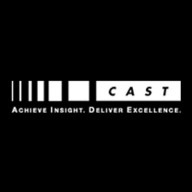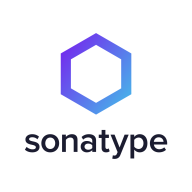

Sonatype Lifecycle and CAST Highlight are key competitors in the software composition analysis category. Sonatype appears to have the upper hand with better integration capabilities and proactive security measures.
Features: Sonatype Lifecycle excels in integrating with DevOps tools and offers proactive security measures and automatic vulnerability detection, which enhances developer productivity. It provides continuous monitoring and policy grandfathering to streamline workflows. On the other hand, CAST Highlight offers a simplified scanning process and a comprehensive overview of role portfolios, though it lacks the extensive integration capabilities of Sonatype.
Room for Improvement: Sonatype Lifecycle could improve beyond Jenkins integration, enhance report compatibility with tools like Splunk, and streamline its user interface. CAST Highlight is considered expensive and could benefit from better configuration and customization, as well as offering more detailed insights per language. Addressing specific feedback from users would be beneficial for both products.
Ease of Deployment and Customer Service: Sonatype Lifecycle supports diverse deployment options, including on-premises and hybrid cloud, and is praised for its dedicated support team and comprehensive integration guidance. Its customer support is efficient in handling queries and integration challenges. CAST Highlight, while providing positive technical support feedback, limits its deployment options to on-premises and public cloud solutions.
Pricing and ROI: Sonatype Lifecycle offers competitive bundled pricing with considerable ROI by improving security hygiene and reducing manual vulnerability checks. Despite some critiques over its add-on pack system, its pricing is justified by its extensive features. CAST Highlight is noted for its high cost and complex licensing arrangements, impacting its perceived value. However, both products offer meaningful ROI through enhanced security and productivity, each with distinct cost structures.


CAST Highlight is a SaaS software intelligence product for performing rapid application portfolio analysis. It automatically analyzes source code of hundreds of applications in a week for Cloud Readiness, Software Composition Analysis (Open Source risks), Resiliency, and Technical Debt. Objective software insights from automated source code analysis combined with built-in qualitative surveys for business context enable more informed decision-making about application portfolios.
CAST is the software intelligence category leader. CAST technology can see inside custom applications with MRI-like precision, automatically generating intelligence about their inner workings - composition, architecture, transaction flows, cloud readiness, structural flaws, legal and security risks. It’s becoming essential for faster modernization for cloud, raising the speed and efficiency of Software Engineering, better open source risk control, and accurate technical due diligence. CAST operates globally with offices in North America, Europe, India, China. Visit www.castsoftware.com.
Sonatype Lifecycle is an open-source security and dependency management software that uses only one tool to automatically find open-source vulnerabilities at every stage of the System Development Life Cycle (SDLC). Users can now minimize security vulnerabilities, permitting organizations to enhance development workflow. Sonatype Lifecycle gives the user complete control over their software supply chain, allowing them to regain wasted time fighting risks in the SDLC. In addition, this software unifies the ability to define rules, actions, and policies that work best for your organizations and teams.
Sonatype Lifecycle allows users to help their teams discover threats before an attack has the chance to take place by examining a database of known vulnerabilities. With continuous monitoring at every stage of the development life cycle, Sonatype Lifecycle enables teams to build secure software. The solution allows users to utilize a complete automated solution within their existing workflows. Once a potential threat is identified, the solution’s policies will automatically rectify it.
Benefits of Open-source Security Monitoring
As cybersecurity attacks are on the rise, organizations are at constant risk for data breaches. Managing your software supply chain gets trickier as your organization grows, leaving many vulnerabilities exposed. With easily accessible source code that can be modified and shared freely, open-source monitoring gives users complete transparency. A community of professionals can inspect open-source code to ensure fewer bugs, and any open-source dependency vulnerability will be detected and fixed rapidly. Users can use open-source security monitoring to avoid attacks through automatic detection of potential threats and rectification immediately and automatically.
Reviews from Real Users
Sonatype Lifecycle software receives high praise from users for many reasons. Among them are the abilities to identify and rectify vulnerabilities at every stage of the SDLC, help with open-source governance, and minimize risk.
Michael E., senior enterprise architect at MIB Group, says "Some of the more profound features include the REST APIs. We tend to make use of those a lot. They also have a plugin for our CI/CD.”
R.S., senior architect at a insurance company, notes “Specifically features that have been good include:
• the email notifications
• the API, which has been good to work with for reporting, because we have some downstream reporting requirements
• that it's been really user-friendly to work with.”
"Its engine itself is most valuable in terms of the way it calculates and decides whether a security vulnerability exists or not. That's the most important thing. Its security is also pretty good, and its listing about the severities is also good," says Subham S., engineering tools and platform manager at BT - British Telecom.
We monitor all Software Composition Analysis (SCA) reviews to prevent fraudulent reviews and keep review quality high. We do not post reviews by company employees or direct competitors. We validate each review for authenticity via cross-reference with LinkedIn, and personal follow-up with the reviewer when necessary.